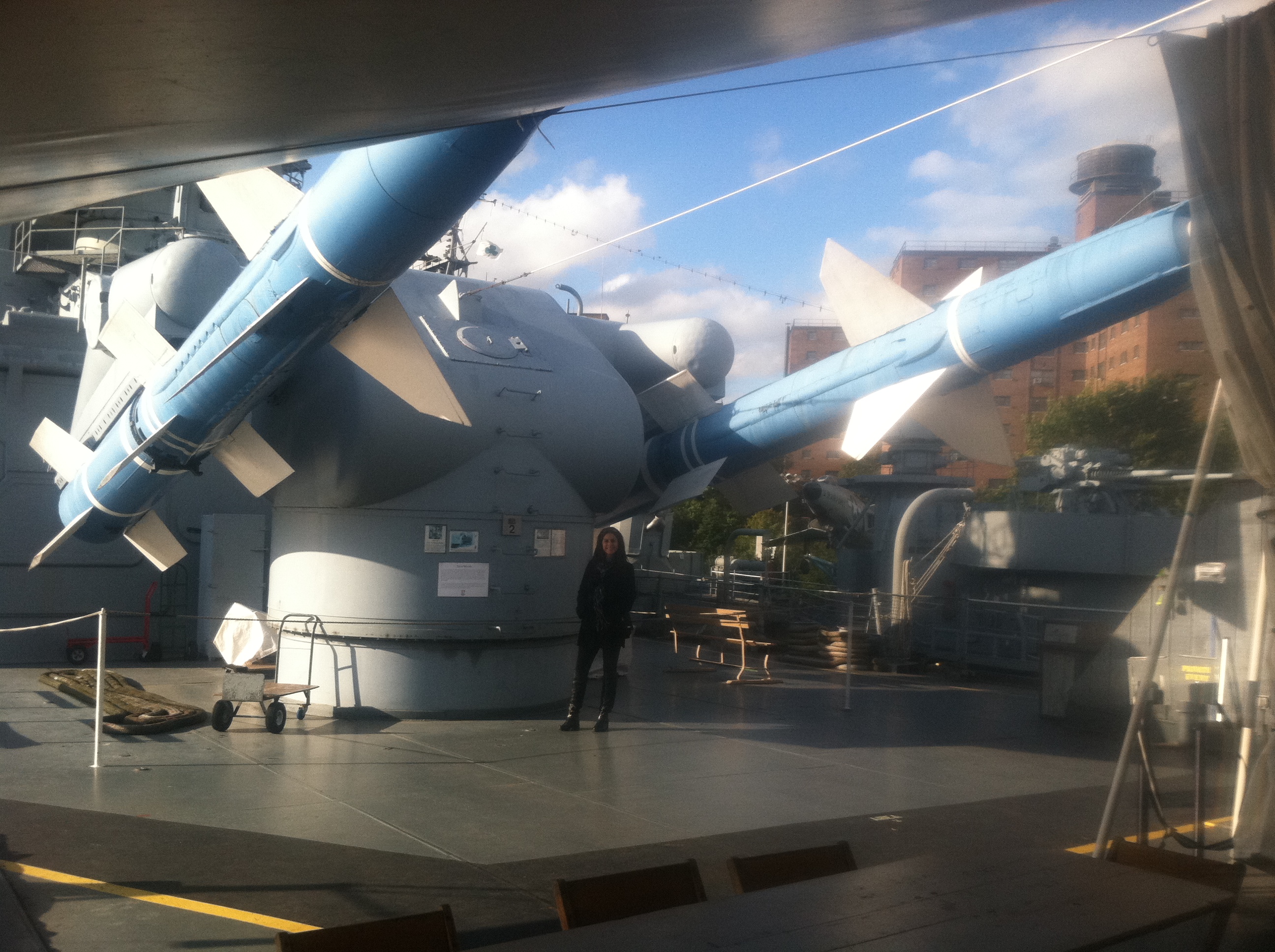Buffalo and Erie County Naval and Military Park Tour
Once you step foot aboard these massive floating cities, you feel as though you’ve been taken back in time. It feels like a simpler, yet more turbulent time. It didn’t take much imagination for me to envision the US Navy Sailors operating these vessels and protecting their country with pride and purpose.
These masterfully built ships were indeed ships of war. They protected our country during it’s darkest times, with strength and courage.
This floating naval museum is truly a site to see, and the vessels an honor to board.

The Buffalo and Erie County Naval and Military Park includes three ships and is the largest inland Naval park in the United State. They also have multiple tanks, helicopters and fighter jets on display as well. The tour even includes an Air Force F-101F Voodoo Fighter Interceptor Jet that was once a part of the Rainbow Squadron.
While I love and respect planes, my main interest was the ships.
The ships have a quiet calmness about them now, but this calmness has only come due to retirement.
The USS Little Rock
The closer I got to the USS Little Rock, the bigger it got. It was like this huge sleeping giant proudly floating out for all the world to see. And why not? The USS Little Rock is the only guided missile cruiser still on display in the U.S.
In fact, the USS Little Rock is the sole survivor of the U.S. Navy’s World War II Cleveland class. Of the 29 total vessels that were made, the only one left is preserved at this Naval Park for us to see. How great is that?

The USS Little Rock is 610 feet long and housed 1,100 Enlisted, 150 Officers and 150 Marines. At first, I thought that was a lot of people. But as I walked through the ship I realized how much work it would be to keep a city afloat and operate the massive missile launchers.

The USS Little Rock was commissioned on June 17, 1945 in Philadelphia, Pa. and decommissioned in November 1976. The following year, in 1977, the USS Little Rock joined the Buffalo Naval Park.
The USS The Sullivans
The USS The Sullivans is named in memory of five brothers who all lost their lives during the Battle of the Solomon Islands during World War II. The Sullivan brothers were on their ship, The USS Juneau when it sank around November 13, 1942. All 687 men on board perished including the five Sullivan brothers.
The Sullivan’s mother, Alleta Sullivan, lost all five of her sons that day. Afterward, Mrs. Sullivan became an important figure in the war effort. She volunteer and traveled to manufacturing plants and shipyards trying to encourage a speedy end to the war.

The Sullivan’s great family loss did not go unnoticed by the United States. On September 30, 1943, the mighty ship was commissioned the USS The Sullivans. The Sullivan was decommissioned in 1965 and was brought to the Naval Park in 1977 with the USS Little Rock.
The U.S. Navy commissioned 175 US Destroyers of the Fletcher class and they served primarily in the Pacific Theater during WWII. The USS The Sullivans took part in intense combat and rescued many survivors from downed planes and damaged ships. For this effort, the Sullivan was awarded nine battle stars for her service.

What an amazing tribute to the Sullivan family. The story of the five Sullivan brothers and the USS Sullivan will stay with me forever.
The USS Croaker
The USS Croaker has a decorated past as well and had several WWII patrols in the Pacific during WWII. During that time she was awarded three battle stars and was responsible for the demise of 11 Japanese vessels, including a cruiser, four tankers, two freight liners, an ammunition ship, two escort craft and a mine sweep. Impressive!
So while the USS Croaker is the smallest of the fleet at the Naval Park, she played an important part in the United State’s success during WWII. This class of submarine was built to assemble a major submarine force just prior to and after the U.S. entry into World War II.

The USS Croaker was commissioned on April 21, 1944. After WWII, the Croaker was converted and recommissioned making routine cruises through the Atlantic, Caribbean, and Mediterranean. Then in December of 1971, the USS Croaker was decommissioned. In 1988, the Croaker was brought to the Buffalo Naval Park to join the Little Rock and Sullivan.
The Croaker is 311 feet long and was home to 74 Enlisted and 7 Officers. That doesn’t sound like a lot of people, but let me tell you, submarines are small. Submarines are very small. If you are claustrophobic, which I am not, it will be difficult to maneuver through this vessel.
Three Giant Heros in One Naval Park
Walking through these massive vessels I couldn’t help but think of our brave servicemen who lived there, fought there and the ones gave their lives for our freedom. I get an indescribable sense of pride visiting military museums. Pride for my country and a deep love and respect for our military. All branches, past and present. It is so important to remember the sacrifices that have been made so we can have the lives we live today.

There are several memorials at the Buffalo Naval Museum as well. Including several moving memorials from Vietnam. I would strongly encourage anyone who has the opportunity to visit to do so. Would I go again? Absolutely!
Have you been to the Buffalo Naval Museum? Which one of these three giants was your favorite?

